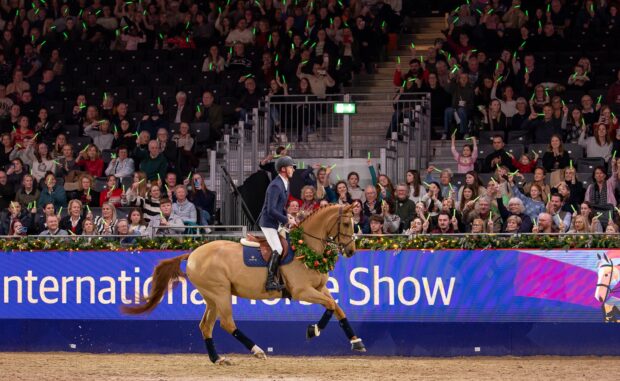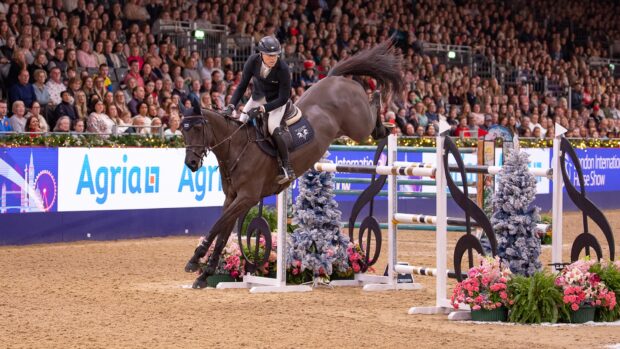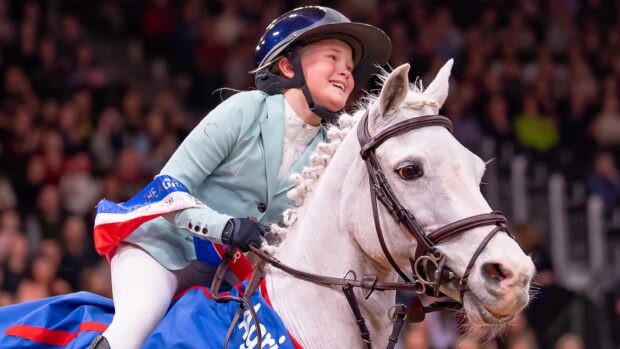A petition calling on the FEI to review its wording of the “flag rule” has gathered more than 3,000 signatures in three days.
The rule caused frustration at Belton in March and at Bicton over the Easter weekend, with scores of appeals and outcomes affecting the placings (report, 25 April).
Top owner and rider Kate Walls told H&H she started the petition as the wording of the rule is vague and needs revising.
“If a horse is disobedient of course there should be a penalty, but these horses are not being disobedient,” she said, adding the rule amounts to “picking at straws”and needs further discussion.
“There has to be a rule that is fair to everybody.”
Her change.org petition calls for the rule to be “suspended immediately” with wider discussion involving riders, owners and governing bodies needed.
“I suggest that the rule is revised as 15 penalties is too high and grossly inappropiate when a horse has clearly made the effort to jump an obstacle without disobedience,” states the petition.
“If the horse knocks the flag but has clearly jumped the obstacle then it should not be penalised.
“Many jumps are so narrow and the combinations are often very tight that this rule has to be open to more interpretation for a safe and fair sport.”
An FEI spokesman told H&H there was “extensive consultation” in 2018 on the proposed amendment to the rule.
This included national federations (NFs)and stakeholders, such as the International Eventing Officials Club (IEOC), who gave feedback on initial and final proposals.
“The proposed rule change reduced the penalties for missing a flag to 15, and the definition of the body of the horse was redefined to include the head, neck, shoulders and pelvis which must pass between the flags,” added the spokesman.
“The amendment was unanimously approved by the NFs as part of the eventing rules at the FEI General Assembly in Bahrain.
“This is not about knocking down a flag, as that on its own will not result in 15 penalties. It is about the body of the horse, as clearly described in the new rule, jumping the original fence even if the flag has been knocked down by the athlete’s foot or the leg of the horse.”
The spokesman added the revised rule, which came into force on 1 January, allows combinations to achieve one of their minimum eligibility requirements (MERs) at that event with 15 penalties. This is provided they do not have any other jumping penalties on the cross-country.
“The FEI is monitoring the implementation of this rule closely,” she added.
“Since its introduction at the beginning of the year, there have been no issues to date at events except in Great Britain, and there were no comments or questions about the 15 penalty rule during the athletes’ briefing in Lexington this week.
“However, we are aware of concerns raised in Great Britain and the online petition launched this week, so we are planning to have meetings with the athletes, ground jury and technical delegate, and the IEOC at Badminton.”
The eventing committee will look at a potential revised wording for 2020.
“Unless there is a risk management impact, a change of rule is not possible during the year, but this rule has not affected those seeking MERs for Tokyo 2020,” said the spokesman.
“Suggestions to suspend implementation of the rule would also not work as the previous version of the rule would have to be reintroduced, which would mean 50 penalties if the athlete continued on course without re-presenting and this would clearly have a negative impact on MERs.”
What is the rule?
The so-called “flag rule” has taken several shapes in recent years.
The most recent wording, which came into force at international events on 1 January 2019, states:
549.2 Run out — missing a flag a) run-out: A horse is considered to have run out (20 penalties) if, having been presented at an element or obstacle on the course, it avoids it in such a way that the body of the horse (head, neck, shoulders and pelvis – legs are not included) fail to pass between the extremities of the element or obstacle as originally flagged. Continuing on course without representing will incur elimination.
b) Missing a flag: A horse is considered to have missed a flag (15 penalties) if the horse jumps the dimension of the obstacle and the majority of the horse’s body (as defined above) passes through the flags. This means that some part of the body is not inside the flags (eg one shoulder, or one shoulder and part of one hip).
c) The horse will have successfully negotiated the fence, if the body of the horse (as defined above) has passed the fence as originally flagged (i.e. the body but not all the legs are inside the flag is considered clear).
Article continues below…
You might also be interested in:

Subscribe to Horse & Hound magazine today – and enjoy unlimited website access all year round

New FEI 2019 eventing rules: five-stars, no collectives and new rules for flags and whips
Find out what changes are in store for the 2019 eventing season

FEI asks: should riders be given yellow cards for badly behaved parents?
‘I think we can all agree that this kind of conduct has no place in our sport and a strong
But this has caused issues as fence judges are expected to make split-second decisions on a rule that is open to interpretation.
Concerns have been raised over the subjectivity this brings into cross-country decisions and inconsistency over how rules are applied (news, 11 April).
Added to this is the fact that only official video footage is allowed to be considered by the ground jury in appeals, despite this not necessarily giving the best view in terms of technical decisions.
Click here to view the petition
For all the latest news analysis, competition reports, interviews, features and much more, don’t miss Horse & Hound magazine, on sale every Thursday




